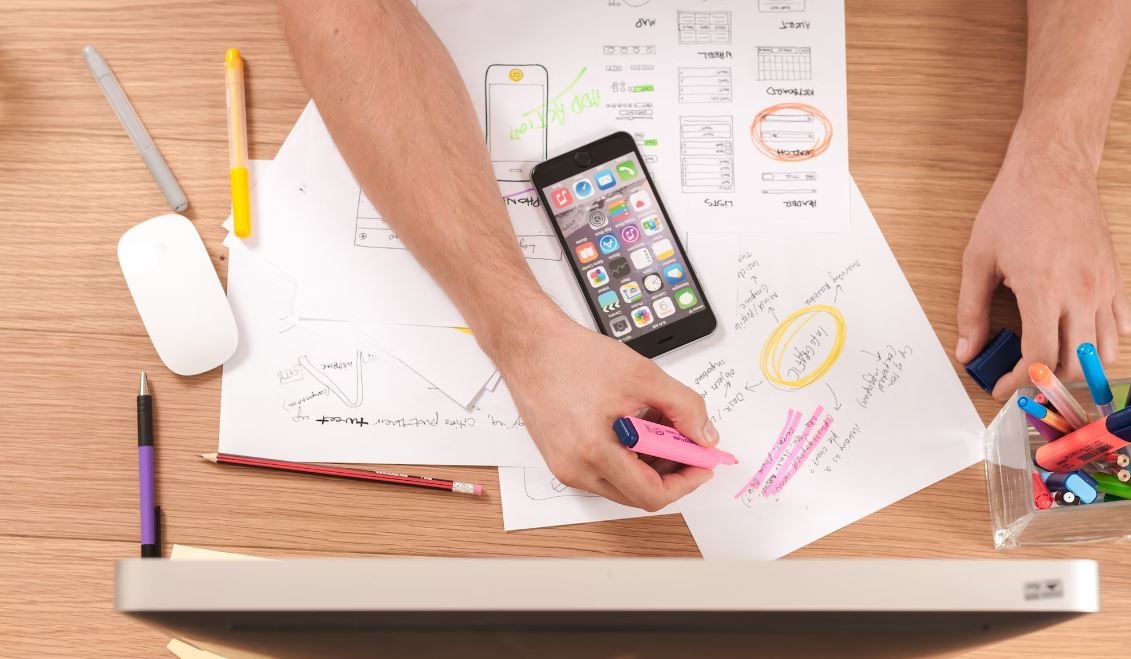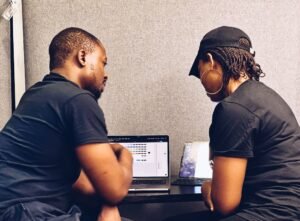Prompting Vs Probing in Education
Effective communication and engagement are vital aspects of education. Teachers often employ different strategies to encourage critical thinking and active participation among students. Two commonly used techniques in the classroom are prompting and probing. While both methods seek to stimulate learning, they differ in their approach and desired outcome. This article explores the differences between prompting and probing in education and their respective benefits.
Key Takeaways:
- Prompting and probing are two distinct strategies used in education to stimulate learning.
- Prompting involves providing cues or hints to guide students’ thinking towards the correct answer or solution.
- Probing, on the other hand, involves asking open-ended questions to encourage deeper understanding and critical thinking.
- Prompting is often used in situations where immediate response or recall of knowledge is required.
- Probing promotes higher-order thinking skills and encourages students to explore concepts more deeply.
The Difference between Prompting and Probing
In education, prompting refers to the act of providing cues, hints, or direct instructions to guide students towards the correct answer or solution. It aims to assist students in recalling information or applying previously learned knowledge. Prompting can be especially useful in tasks that require immediate responses, such as quick recall of facts or specific procedures. For example, a teacher might prompt a student by saying, “Remember, the formula for calculating area is length multiplied **by** width.” This technique helps students retrieve and apply relevant information quickly.
*A well-timed prompt can significantly enhance students’ ability to retrieve and recall information with accuracy.*
Probing, on the other hand, involves asking open-ended questions that encourage students to think critically and explore concepts in more depth. Instead of providing answers or cues, the teacher prompts students to reflect, analyze, justify, or predict. By posing challenging questions, teachers stimulate higher-order thinking skills and facilitate a more profound understanding of the subject matter. For instance, a teacher may ask, “How do different cultural perspectives influence the interpretation of historical events?” This probing question opens the door for students to critically analyze the impact of cultural context on historical narratives.
*Probing questions encourage students to think beyond surface-level understanding and consider multiple perspectives or possibilities.*
Prompting Strategies
Prompting strategies are tailored to guide students towards the correct answer or solution. They play a crucial role in enhancing immediate recall and retrieval of information. Here are a few common prompting techniques:
- **Verbal prompts**: Using verbal cues or hints to provide guidance, such as asking leading questions or providing keywords.
- **Visual prompts**: Using visual aids, such as diagrams, charts, or illustrations, to illustrate concepts or guide students’ thinking.
- **Gestural prompts**: Using body language, gestures, or cues to direct students’ attention or indicate the correct response.
By employing these strategies, teachers create a supportive learning environment that facilitates students’ ability to recall and apply knowledge swiftly.
Probing Strategies
Probing strategies aim to encourage students to think deeply, analyze, and critically evaluate information. These techniques foster higher-order thinking skills and promote a more comprehensive understanding. Here are a few common probing techniques:
- **Socratic questioning**: Asking thought-provoking questions that challenge assumptions, encourage reasoning, and provoke reflection.
- **Think-pair-share**: Structuring activities where students think individually, discuss with a partner, and then share their ideas with the whole class.
- **Problem-solving scenarios**: Presenting students with real-world problems that require collaborative thinking, negotiation, and creative problem-solving.
These strategies empower students to delve deeper into a topic, consider different perspectives, and generate well-supported arguments or solutions.
Data on Prompting and Probing
| Survey Results | Percentage |
|---|---|
| Teachers who frequently use prompts in the classroom | 67% |
| Teachers who frequently use probes in the classroom | 52% |
| Students who prefer being prompted for immediate recall tasks | 74% |
| Benefits of Prompting | Benefits of Probing |
|---|---|
|
|
| Prompting | Probing |
|---|---|
| Immediate response and recall | Higher-order thinking skills |
| Guidance and support | Encourages exploration and analysis |
| Best suited for quick fact retrieval | Best suited for deeper understanding |
Implementing Prompting and Probing in Education
The choice between prompting and probing depends on the desired outcome and the specific learning objectives of a lesson or task. Both strategies have their place in education and can complement each other. When designing instruction or facilitating discussions, teachers should consider the following:
- **Context**: Assess the cognitive demands of the task and determine if immediate recall or critical thinking is more appropriate.
- **Learning Goals**: Align the chosen strategy with the desired learning outcomes and objectives.
- **Student Assessment**: Observe students’ responses and adjust strategies based on individual needs and progress.
By combining both prompting and probing techniques, educators can create engaging and effective learning environments that cater to students’ diverse learning needs and promote meaningful understanding.
*Remember, the ultimate goal of prompting and probing is to foster student learning and facilitate their journey towards knowledge and mastery.*

Common Misconceptions
Prompting
One common misconception people have about prompting in education is that it involves providing the answer to students without allowing them to think for themselves. In reality, prompting is a strategy used to guide students’ thinking and help them come up with the answer on their own.
- Prompting encourages critical thinking skills
- Prompting helps students develop problem-solving skills
- Prompting promotes independent thinking and autonomy
Probing
Another misconception is that probing in education is solely about asking questions. While questioning is a key aspect of probing, it goes beyond that. Probing involves actively seeking understanding, encouraging elaboration, and helping students make connections between concepts.
- Probing enhances students’ comprehension and understanding
- Probing promotes deeper thinking and reflection
- Probing supports collaborative learning and discussion
Differentiation
Many people mistakenly believe that prompting and probing should be used in the same way for all students. However, one size does not fit all when it comes to education. Differentiation is essential in effectively using prompting and probing strategies to meet the diverse needs and abilities of students.
- Differentiation allows for personalized learning experiences
- Differentiation supports individualized instruction
- Differentiation promotes inclusivity and equity in education
Over-reliance on prompting/probing
There is a misconception that excessive reliance on either prompting or probing is beneficial for learning. However, both strategies should be used in moderation and complement each other. Overusing prompting can hinder students’ development of independent thinking skills, while overusing probing can lead to cognitive overload and frustration. A balanced approach is key.
- A balanced use of prompting and probing maximizes learning outcomes
- Both strategies should be used strategically and purposefully
- Avoiding over-reliance enhances student engagement and motivation
Role of the teacher
A common misconception is that the teacher’s role in prompting and probing is to simply deliver information or ask questions. In reality, effective use of these strategies requires teachers to carefully observe, listen, and understand their students’ thinking processes. Teachers need to adapt their prompts and probes based on students’ responses and provide appropriate guidance to support learning.
- Teachers play a vital role in scaffolding student learning
- Skilled teachers use prompts and probes as formative assessment tools
- Teachers foster a supportive learning environment through effective use of prompts and probes

Prompting vs Probing in Education
Prompting and probing are two different approaches used in education to elicit information and facilitate learning. While prompting involves giving explicit guidance or cues to direct students towards a particular answer, probing involves asking open-ended questions to encourage critical thinking and exploration. This article explores the benefits and drawbacks of both prompting and probing techniques in education.
Comparing Prompting and Probing Techniques
This table compares the main characteristics of prompting and probing techniques in education.
| Technique | Characteristics | Advantages | Disadvantages |
|---|---|---|---|
| Prompting | Provides explicit guidance or cues | Increases immediate student response | May limit critical thinking and creativity |
| Probing | Asks open-ended questions | Encourages critical thinking and exploration | May take longer for students to respond |
Effectiveness of Prompting and Probing Techniques
This table presents the effectiveness of prompting and probing techniques based on student learning outcomes.
| Technique | Effectiveness |
|---|---|
| Prompting | Immediate response and recall |
| Probing | Deeper understanding and critical thinking |
Application of Prompting and Probing Techniques
This table illustrates the various educational contexts in which prompting and probing techniques can be applied.
| Educational Context | Prompting | Probing |
|---|---|---|
| Mathematics | Step-by-step problem-solving | Exploring different problem-solving strategies |
| Language Arts | Guided reading activities | Discussion-based analysis of literature |
Student Engagement with Prompting and Probing
This table demonstrates how student engagement differs when using prompting versus probing techniques in education.
| Technique | Student Engagement |
|---|---|
| Prompting | Active participation with guided structure |
| Probing | Intrinsic motivation with autonomy |
Evaluating Teacher Feedback
This table outlines the characteristics of teacher feedback given with prompting and probing techniques.
| Technique | Feedback Characteristics |
|---|---|
| Prompting | Specific guidance with correct answers |
| Probing | Open-ended questions that facilitate self-reflection |
Effect on Student Confidence
This table shows the impact of prompting and probing techniques on student confidence levels.
| Technique | Effect on Confidence |
|---|---|
| Prompting | Higher confidence in narrow topics |
| Probing | Higher confidence in broader concepts |
Implementing Prompting and Probing
This table provides strategies for effectively implementing prompting and probing techniques in the classroom.
| Technique | Implementation Strategies |
|---|---|
| Prompting | Gradually reduce prompts to promote independence |
| Probing | Model effective questioning and provide scaffolding |
Assessment Methods
This table highlights different assessment methods used to measure the effectiveness of prompting and probing techniques.
| Technique | Assessment Methods |
|---|---|
| Prompting | Written tests or quizzes |
| Probing | Oral presentations or portfolio assessments |
Conclusion
Prompting and probing are two unique approaches in education that both have their advantages and limitations. Prompting can provide immediate responses and promote topic-specific confidence, while probing encourages critical thinking and understanding of broader concepts. Ideally, a balance between these techniques should be sought to maximize student engagement and learning outcomes. Educators should carefully consider the context, goals, and individual needs of students when selecting the most appropriate technique for a particular learning situation. By utilizing prompting and probing effectively, educators can foster a dynamic and stimulating learning environment.
Prompting Vs Probing in Education
Frequently Asked Questions
What is the difference between prompting and probing in education?
Prompting in education refers to providing cues or reminders to students to help them recall information or guide their thinking. Probing, on the other hand, involves asking thought-provoking questions to encourage critical thinking and deeper understanding.
How can prompting be used effectively in the classroom?
Prompting can be used effectively in the classroom by using visual aids, providing specific examples, or using mnemonic devices to help students remember important information. It can also be used to guide students through problem-solving tasks.
What are the benefits of probing in education?
Probing in education promotes higher-order thinking skills, enhances problem-solving abilities, and fosters independent and critical thinking. It helps students explore different perspectives, analyze complex concepts, and develop a deeper understanding of the subject matter.
When is it appropriate to use prompting in education?
Prompting can be used in various scenarios, such as when introducing new concepts, reviewing previously learned material, or providing support to students who need additional assistance. It is particularly helpful when students are learning complex or abstract concepts.
How can teachers encourage effective probing in the classroom?
Teachers can encourage effective probing in the classroom by creating a safe and supportive learning environment, asking open-ended questions that require critical thinking, actively listening to students’ responses, and providing constructive feedback to further stimulate their thinking.
Are there any drawbacks to using too much prompting in education?
While prompting can be beneficial, over-reliance on prompting could hinder students’ independent thinking and problem-solving skills. It is essential to strike a balance and gradually reduce prompting to foster self-directed learning and development of students’ metacognitive abilities.
Can prompting and probing be used together in education?
Absolutely! Both prompting and probing have their place in education. By using a combination of these strategies, teachers can scaffold learning by providing guidance through prompts while encouraging students to think critically through probing questions.
What are some effective probing techniques for engaging students in dialogue?
Effective probing techniques include using the Socratic method, asking students to explain their reasoning or provide evidence for their answers, using hypothetical scenarios, encouraging peer-to-peer discussions, and using real-world examples to encourage deeper thinking and analysis.
How can teachers assess the effectiveness of their prompting and probing techniques?
Teachers can assess the effectiveness of their prompting and probing techniques by evaluating students’ ability to apply knowledge to real-world situations, their level of critical thinking demonstrated in their responses, and their overall engagement and participation in classroom discussions and activities.
Can prompting and probing strategies be adapted for different grade levels and subject areas?
Absolutely! Prompting and probing strategies can be tailored to suit different grade levels and subject areas. The level of complexity and the types of questions used may vary depending on the students’ cognitive abilities and the content being taught.




